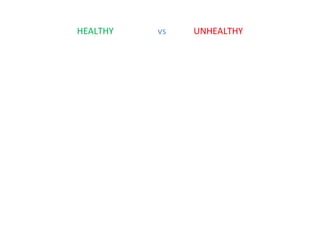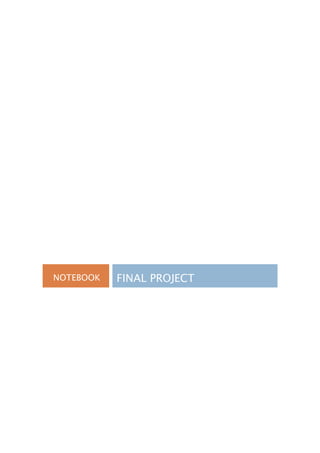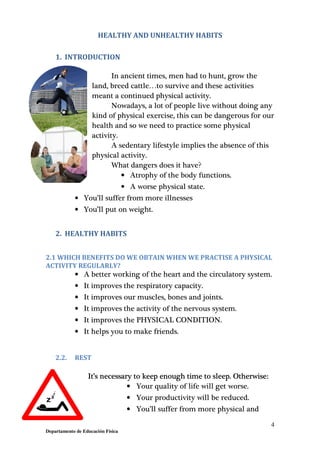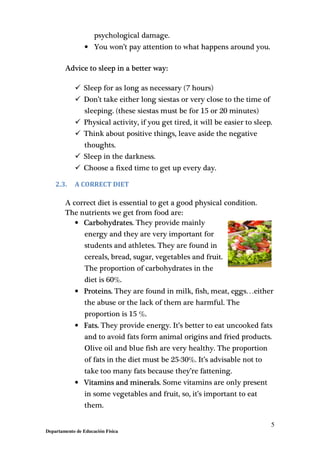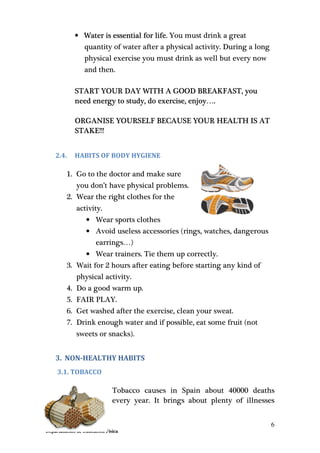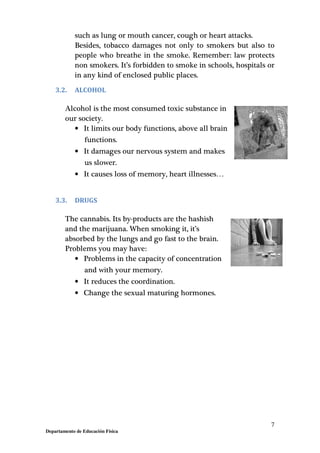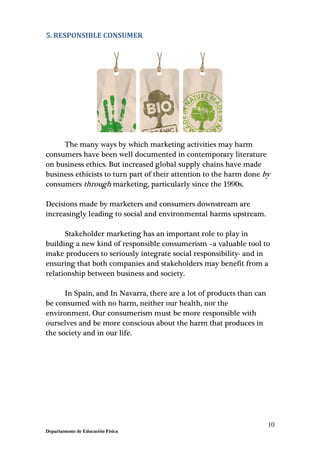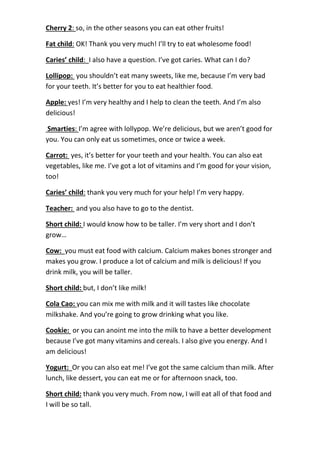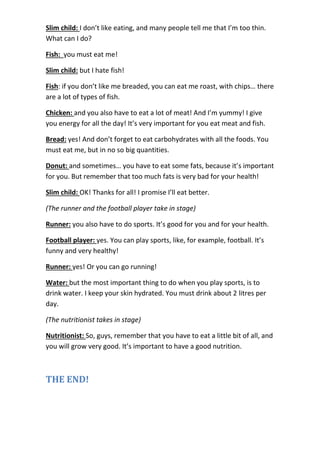The document outlines a didactic unit on nutrition and healthy eating for bilingual 2nd ESO students at IES Benjamín de Tudela, focusing on developing autonomy in physical activity, healthy habits, and responsible consumption. It provides objectives, evaluation criteria, and outlines methodologies incorporating collaborative work, including a final project where students create a film. Emphasizing interdisciplinary learning, the unit integrates physical education with nutrition education while fostering critical thinking and language skills in English.
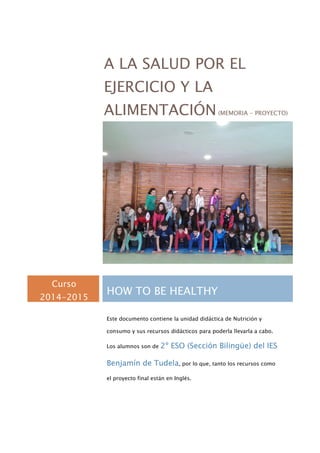






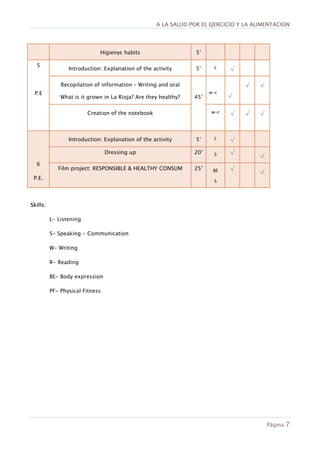


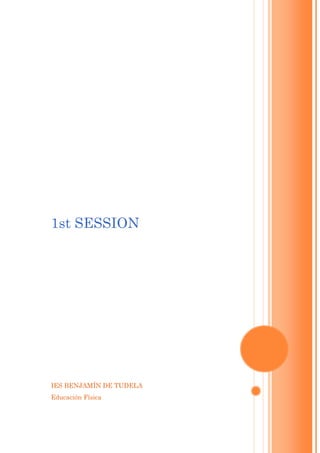
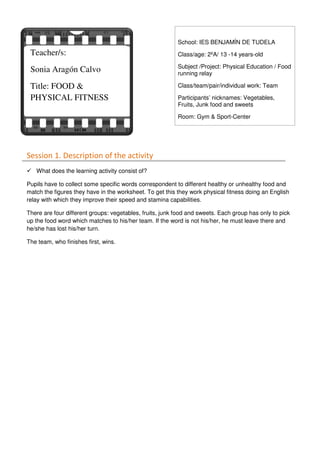
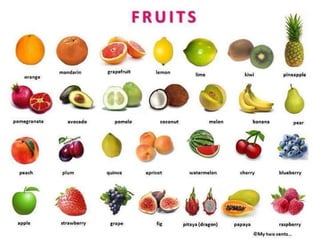

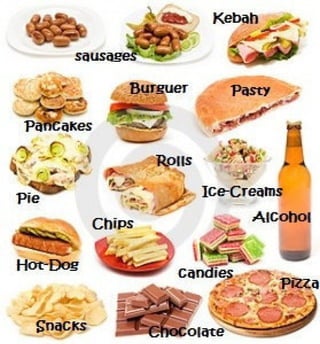



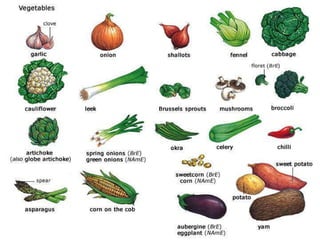


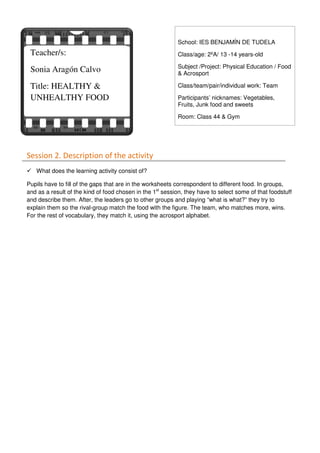




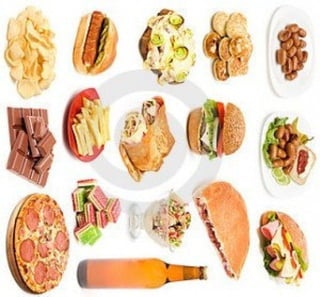

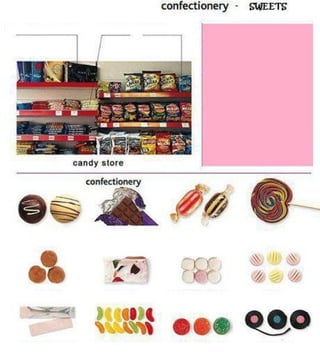



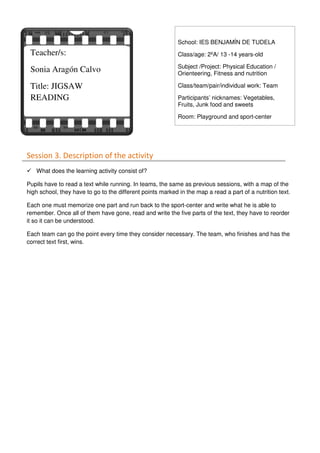
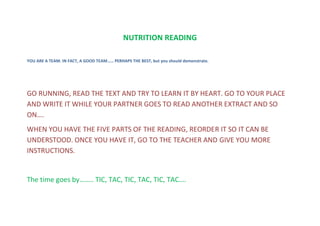

![Nutrition (also called nourishment or aliment) is the provision, to cells and
organisms, of the materials necessary (in the form of food) to support life. Many
common health problems can be prevented or alleviated with a healthy diet.
The diet of an organism is what it eats, which is largely determined by the
perceived palatability of foods. Dietitians are health professionals who specialize
in human nutrition, meal planning, economics, and preparation. They are trained to
provide safe, evidence-based dietary advice and management to individuals (in
health and disease), as well as to institutions.
The essential components of a healthy diet are:
- Fruit and vegetables
- Cereals and grains
- Eggs, Cheese, meat and fish
- Milk and other milk products
Balanced diet
Not all diets are healthy. The food taken is must provide all the nutrients
for body growth and the energy for exercise. A balanced diet must contain all the
nutrients you need in the correct amount. A varied diet must have a plentiful
supply of fruit and vegetables and not contain too much fat.
A balanced diet is based on the pyramid of foods:
Comentario [s1]: 1st part of reading
Comentario [s2]: 2nd part of reading
Comentario [s3]: 3rd part of reading
Comentario [s4]: 4th part of reading
Comentario [s5]: 5th part of reading](https://image.slidesharecdn.com/proyectofinalaicleintef-150504164906-conversion-gate02/85/Proyecto-final-aicle-intef-36-320.jpg)



